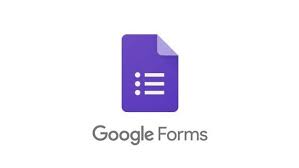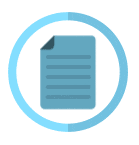Teaching Writing Through Canva Application at MTS Al-Islamiyah Ciledug
DOI:
https://doi.org/10.31597/sl.v6i1.603Keywords:
writing, teaching writing, canva applicationAbstract
This study aims to determine how effective the use of Canva application media is in teaching writing. This research was conducted in July-August at Mts Al-Islamiyah, Ciledug. Researchers used quantitative methods with pre-experimental methods by applying pre-test and post-test as instruments in collecting data. Researchers used one class in class IX-1 MTs Al-Islamiyah Ciledug as the population. The method in this study using the rendom sampling technique used in class IX-1. The mean score on the post test was 70.83 and the pre-test was 64.73. It also shows that the Tcal value (9,585) is higher than the Ttable (2.021), at the 5% significance level. If the result t-test is higher than t-table, the alternative hypothesis (Ha) is accepted, and (H0) is rejected. Based on the results of the t-test calculation above, because the positive hypothesis (Ha) is accepted, it can be concluded that the Canva Application is an effective use of media in teaching writing skills.
References
Al-Rawahi, N. M. & Al-Balushi, S. M. (2015). The Effect of Reflective
Science Journal Writing on Students’ Self-Regulated Learning Strategies. International Journal of Environmental & Science Education. Vol. 10. No. 3.
Haerazi, & Irawan, L. A. (2019). Practicing Genre-Based Language
Teaching Model to Improve Student’s Achievement of Writing Skills. Indonesian Journal of English Language Teaching and Applied Linguistics. Vol. 4. No. 1.
Javed, Muhammad., et al. (2013). A study os Students’ Assessment in
Writing Skills of the English Language. Internasional Journal of Instruction. Vol 4. No. 2.
Ma’azi, Halaleh & Janfeshan, K. I. (2018). The Effect of Edmodo Social
Learning Network on Iranian EFL Learners Writing Skill. Corgent
Education. Vol. 5. No. 1.
Thomas, J.S. et al. (2017). Mobile-Assisted Narrative Writing for Young
Learners from a Funds of Knowledge Approach. Language Learning & Technology. Vol. 21. No. 1.
Veerappan, V. A. L. (2011). The Effect of Scaffolding Technique in Journal
Writing among the Second Language Learners. Journal of Language Teaching and Research. Vol. 2. No. 4.
Waschle, Kristin. Et al. (2015). Effect on Comprehension, Interest and
Critical Reflection. Journal of Writing Research. Vol. 5. No. 2.
Wojtalewijcz, Brock. et al. (2016) Lexical Standards for Expository Writing
at Grade 3: The Transition from Early Literacy to Academic Literacy. Language and Literacy Journal. Vol. 18. No. 3.
Yacoob, A. & Suriyanti, S. (2016). Exploring Teacher Strategies in
Teaching Descriptive Writing in Indonesia. Malayasian Journal of
Learning and Instruction. Vol. 13. No. 2.
Yamac, Ahmet. & Mustafa, Ulusoy. (2016). The Effect of Digital
Storytelling in Improving the Third Graders' Writing Skills. International Electronic Journal of Elementary Education. Vol. 9. No.1
Downloads
Published
How to Cite
Issue
Section
License
1. Copyright of this journal is possession of Editorial Board and Journal Manager, by the knowledge of author, whilst the moral right of the publication belongs to the author.
2. Legal formal aspect of journal publication accessibility refers to Creative Commons Atribution-ShareAlike (CC BY-SA), implies that this license lets others remix, adapt, and build upon your work even for commercial purposes, as long as they credit you and license their new creations under the identical terms. This license is often compared to “copyleft” free and open source software licenses.
3. Every publications (printed/electronic) are open access for educational purposes, research, and library. Other that the aims mentioned above, editorial board is not responsible for copyright violation















